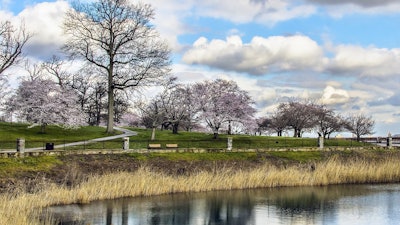
WASHINGTON, D.C. – Today the U.S. Environmental Protection Agency (EPA) announced new Water Infrastructure Finance and Innovation Act (WIFIA) loans totaling $688 million to help finance water infrastructure projects in Baltimore, Md.; Milwaukee, Wis.; and the San Francisco Bay area. In the first year of the Biden-Harris administration, EPA closed 29 WIFIA loans that are investing over $5 billion in communities across the country to protect public health and the environment while creating over 36,000 jobs.
“In my first year as EPA Administrator, I have visited communities from coast to coast. I’ve seen aging infrastructure that communities count on for clean and safe water. I’ve seen the harm that is caused when water systems fail, and I’ve seen the revitalization that comes with new investment,” said EPA Administrator Michael S. Regan. “Investing in water infrastructure strengthens the health of our communities while creating good paying jobs. This is a fundamental way that EPA is Building a Better America under President Biden’s leadership, and its why we’re so excited to put more than $50 billion to work in water infrastructure through the Bipartisan Infrastructure Law.”
In a speech to the U.S. Conference of Mayors on Wednesday morning, Administrator Regan announced new WIFIA loans that together will create more than 4,000 jobs, while emphasizing the promise of President Biden’s commitment to Building a Better America.
Baltimore, Md.
EPA’s WIFIA financing totaling $396 million will help the City of Baltimore proactively implement projects to improve the reliability and resiliency of its water systems, including by replacing water mains ahead of schedule. Through WIFIA, the city will save approximately $100 million while project construction and operation are expected to create an estimated 2,700 jobs.
Union Sanitary District, Calif.
EPA’s $250 million WIFIA loan to Union Sanitary District in California will help fund upgrades to aging water infrastructure to improve wastewater treatment, reduce nutrient discharges to the San Francisco Bay, and increase resiliency to the impacts of climate change. Project construction and operation are expected to create 1,630 jobs.
Milwaukee, Wis.
EPA’s $42 million WIFIA loan will help the Milwaukee Metropolitan Sewerage District expand its stormwater management capacity and reduce flood risk in historically underserved communities. Project construction and operation are expected to create an estimated 130 jobs.
The public health, environmental, and economic benefits of these projects are illustrative of what many more communities will see under the Bipartisan Infrastructure Law. EPA is receiving more than $50 billion to improve our nation’s drinking water, wastewater, and stormwater infrastructure – the single largest investment in water that the federal government has ever made. In 2022, EPA is providing $7.4 billion through the law to the State Revolving Funds, with more to come in the next five years. In December, Administrator Regan sent a letter to Governors of every state and territory, calling for resources to be targeted to overburdened communities, to make rapid progress on lead-free water for all, and to tackle forever chemicals.
For more information about the WIFIA program, including more information on the loans announced today, visit: https://www.epa.gov/wifia.
For more information on EPA and the Bipartisan Infrastructure Law, visit: https://www.epa.gov/infrastructure.
Background
Established by the Water Infrastructure Finance and Innovation Act of 2014, the WIFIA program is a federal loan and guarantee program administered by EPA. WIFIA’s aim is to accelerate investment in the nation’s water infrastructure by providing long-term, low-cost supplemental credit assistance for regionally and nationally significant projects. The WIFIA program has an active pipeline of pending applications for projects that will result in billions of dollars in water infrastructure investment and thousands of jobs.
SOURCE: U.S. EPA



